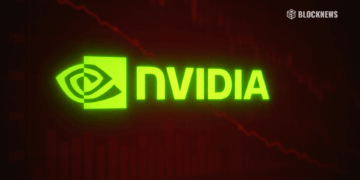- OnlyFake uses AI to quickly generate convincing fake IDs, which are difficult to detect. It allows users to easily create realistic fake drivers licenses and passports for $15.
- The advancement of AI-generated fake IDs calls into question current identity verification methods that rely on scanned or photographed documents.
- The case of OnlyFake highlights the dual-use potential of AI for benefit and harm, underscoring the need for dialogue around AI regulation across sectors.
Coin Center‘s Director of Research, Peter Van Valkenburgh, has sounded the alarm on the growing threat of AI being used to generate fake IDs. This comes after an investigative report detailed an underground website called OnlyFake that claims to use neural networks to create realistic fake IDs in minutes.
How OnlyFake’s AI Works
OnlyFake allows users to easily create convincing fake IDs from drivers licenses to passports for numerous countries. The service run by an individual known as John Wick uses advanced AI techniques to generate IDs with realistic backgrounds that make them difficult to detect. For just $15, anyone can now produce high-quality phony IDs with unparalleled efficiency.
The Implications for Cybersecurity
This advancement calls into question current identity verification methods that rely on scanned or photographed documents, as AI can now create extremely realistic forgeries. Valkenburgh believes decentralized tech like blockchain could provide secure transactions without traditional ID checks. But the arms race continues as methods to combat fraud must continuously evolve to match AI’s capabilities.
Broader Societal Impacts
The rapid progress in AI-generated fake identities poses challenges beyond cybersecurity. It underscores the need to grapple with AI’s dual-use potential for benefit and harm as well as dialogue around AI regulation. The OnlyFake case serves as an example of AI’s risks that institutions across sectors must address.














